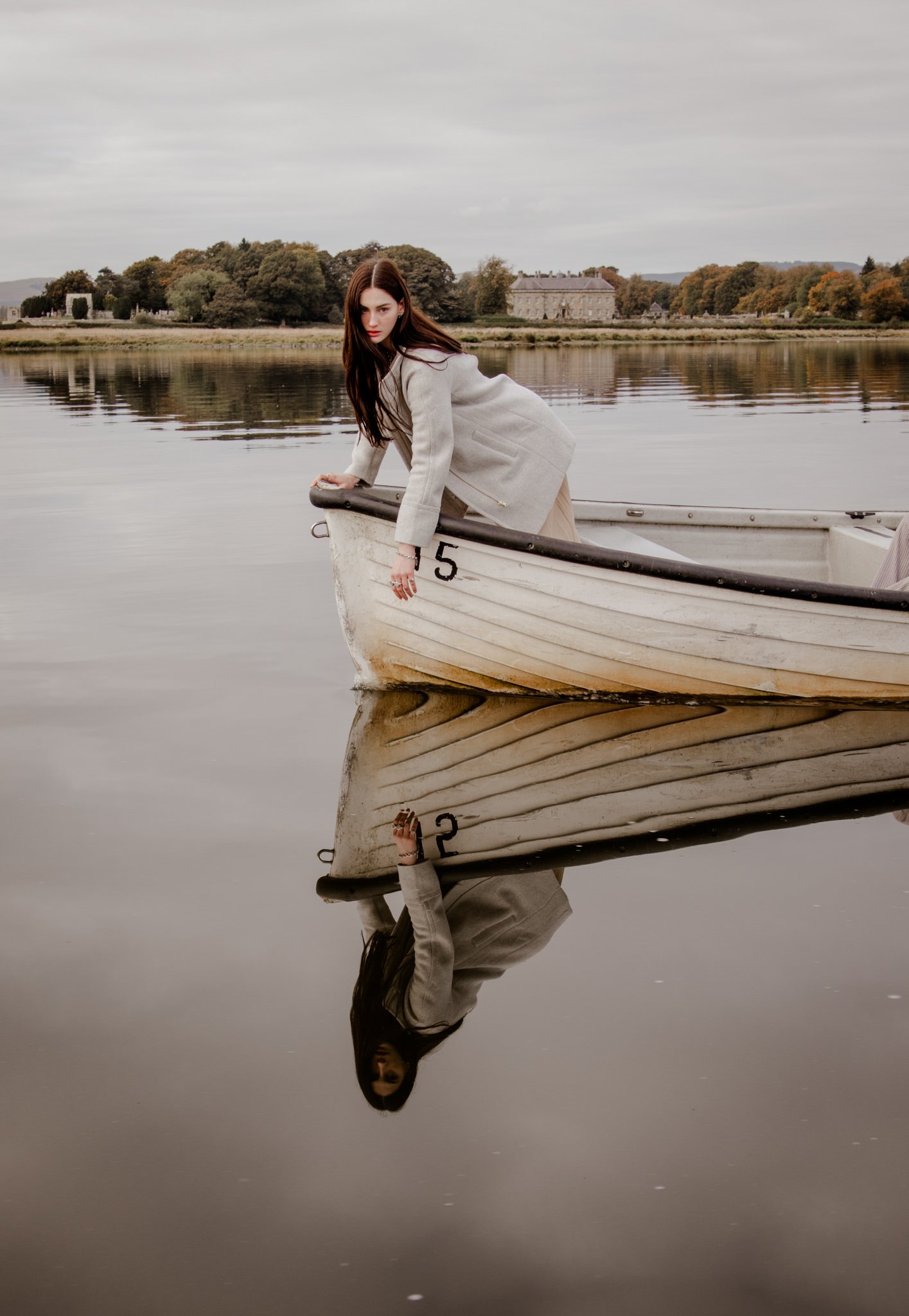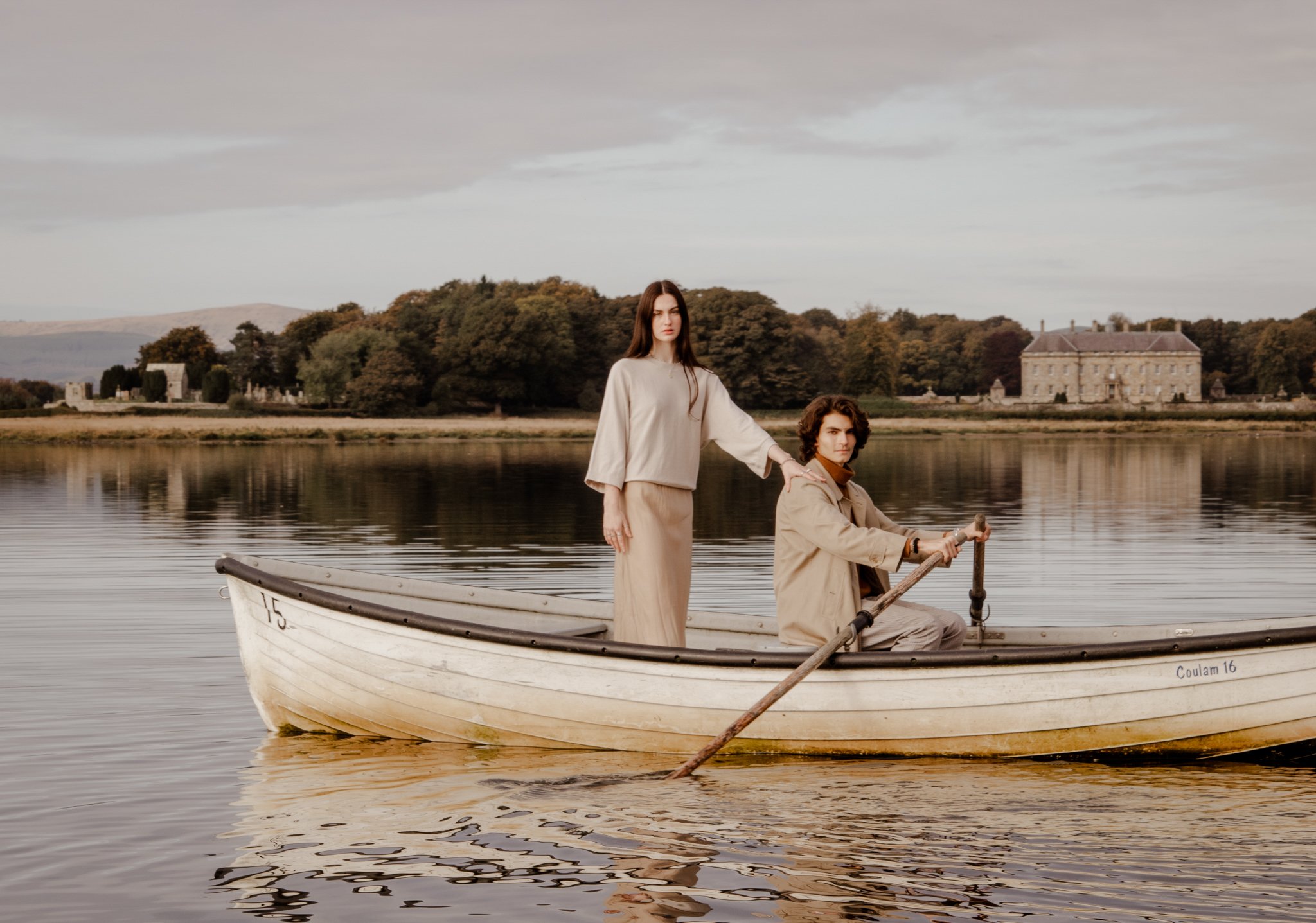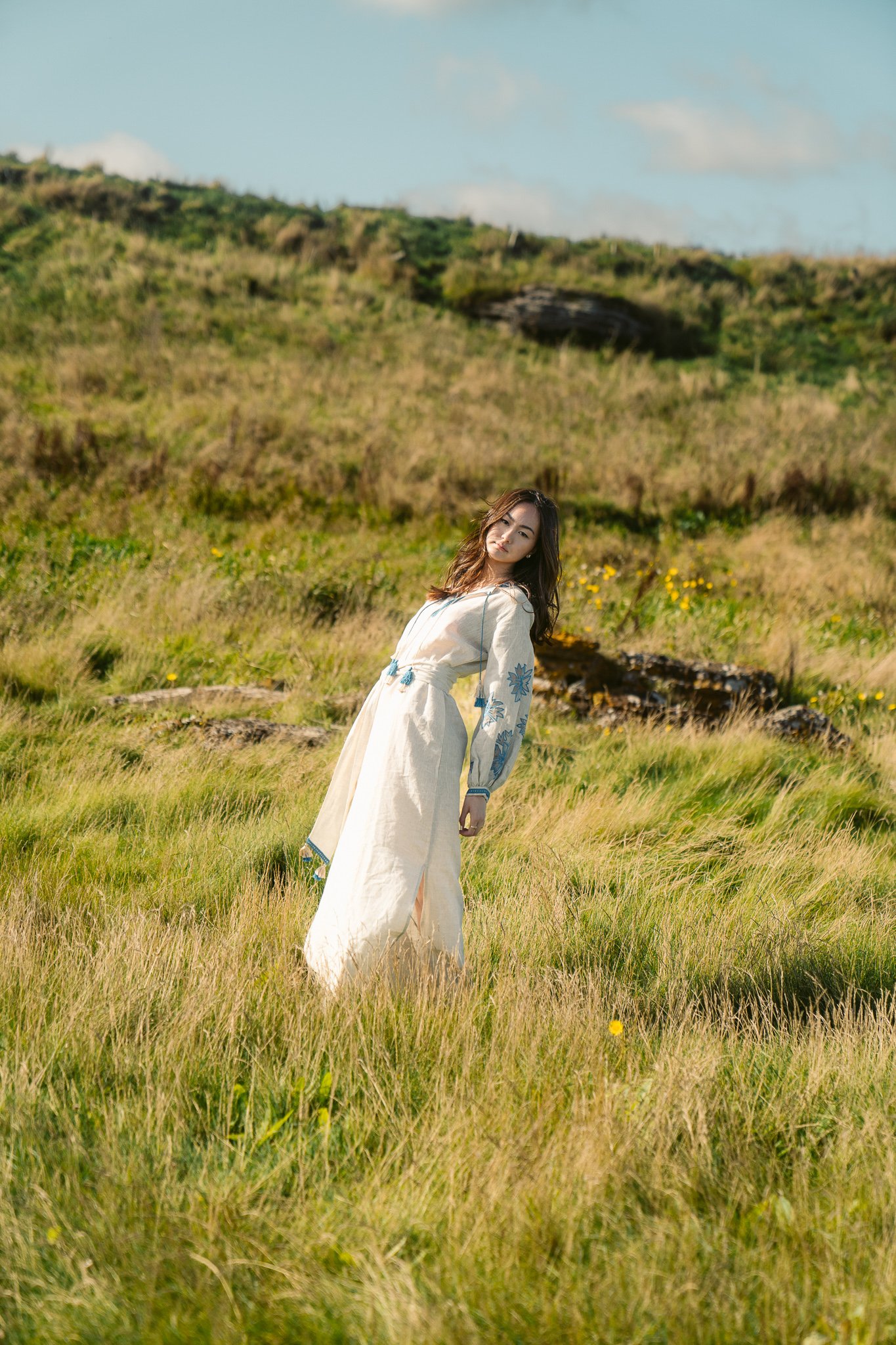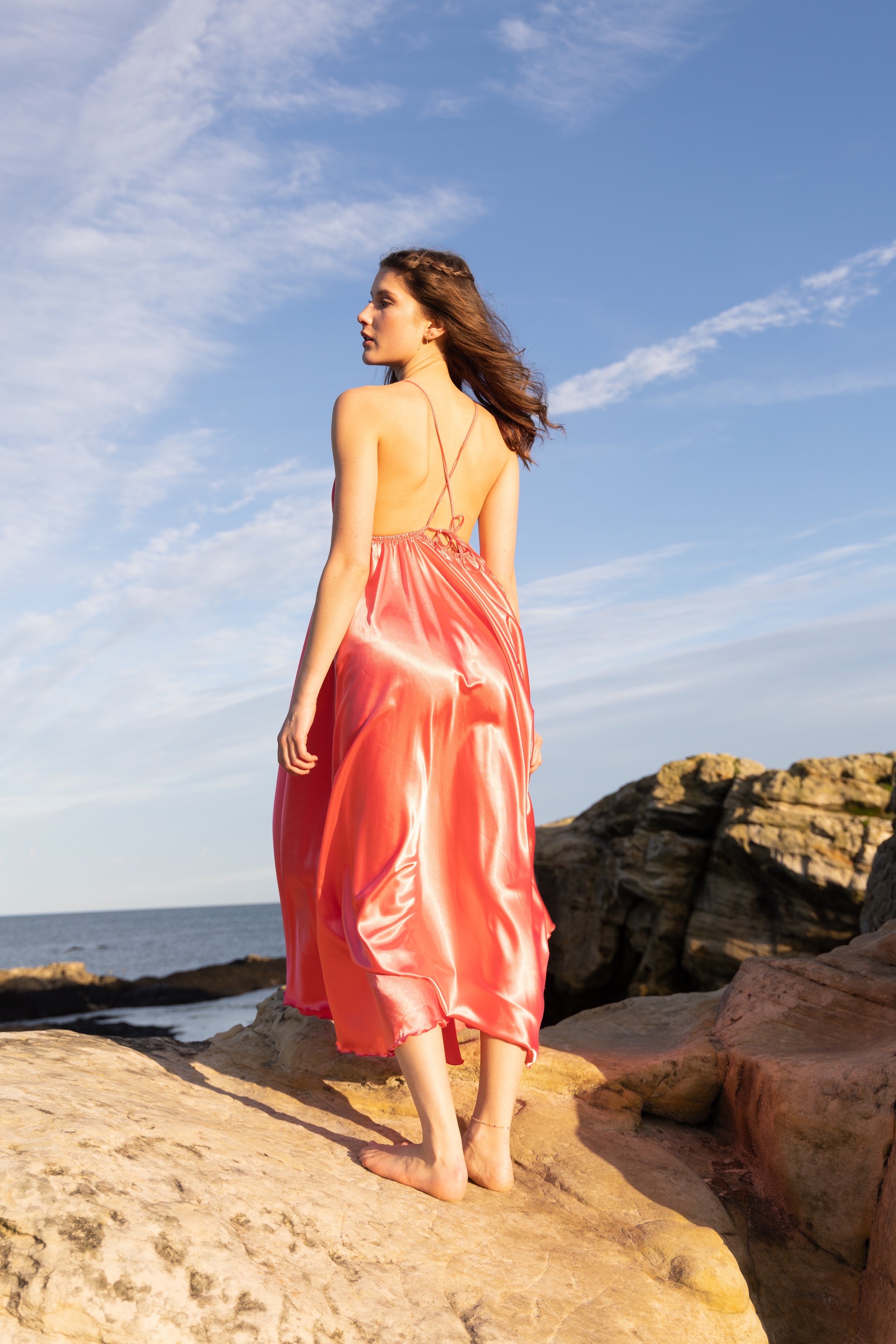
FS2022 | ENCOMPASSING ENVIRONMENTS
Creative Director: Felix Barlett
CELEBRATING 30 YEARS OF FS
For the first time in modern history, our world and the peripheries we engage with have gotten radically smaller. Restrictions upon our freedom of movement have forced us to introspect, both personally and environmentally. As a result, the influence of our immediate environment upon our identities is now more potent and effectual than ever before.
Such context makes us part of a generation of St Andrews students privileged to partake in a unique collective Scottish consciousness. The thirtieth anniversary of FS calls for a celebration of this fact, one that has inspired us to incorporate critical aspects of Scottish history, design, and culture into all facets of the theme this year.
To shed light upon the sublime beauty of Scotland, we have chosen to present to you a variety of juxtaposing environments. In Loch Leven, we visit a glassy sheet of water that shimmers placidly beneath the rugged and inhospitable peaks of the Cairngorms. We then compare the decadent grandeur of Edinburgh Castle to the skeletal docks of Dundee that brought industrial prosperity to the banks of the Tay. No better is this juxtaposition exemplified than in our own town, where a coastal path that connects each of Fife’s bucolic sea-side towns encases St Andrews’ ancient ruins that lie riddled with historic consequence.
These locations overflow with natural and architectural diversity, allowing us to cultivate a vibrant collection of contrasting editorials with different styles and aesthetic approaches. Through this cultivation of Scotland’s contrasting beauty, we have been inspired to establish a long-term commitment to reforesting and rewilding these natural environments. This will accompany our contributions to charities addressing prevalent social issues in Scotland and lay a foundation that sustains areas in need of aid.
This year, FS seeks to curate a prism through which a variety of Scottish landscapes and histories will refract. Through this refraction we will consider the dynamically reciprocal impact of the environment upon our identity.
NATURAL ENVIRONMENTS: LOCH LEVEN









A serene, placid sheet of water encompasses Loch Leven Castle. This unpolluted nature reserve is home to an abundance of aquatic and aerial life. The water’s permeable surface is only occasionally disturbed by a leaping pike or a family of fledgling swans treading water as they attempt to make their first ascents. The water’s reflection acts as a blank canvas, adjusting to any palate projected upon it. The cyclically seasonal foliage that grows on the loch’s periphery paints the outskirts of the surface.
Historically iconic individuals have traversed the loch, confronted by that same mirror we gaze into today. Upon one of the islands interrupting the water sits a decrepit ruin that once served as a prison for Mary Queen of Scots in the late 16th century. Having once frequented the castle for festive and celebratory occasions on behalf of the Kinross Estate, she found herself incarcerated there at the mercy of a volatile political climate.
The displacing effect of the past upon the present overtly reveals itself as we introspect in our refections. This process extends far beyond our own experience. Generations have traversed the glittering loch, with each disturbance of its surface leaving a ripple that reverberates through history.
NATURAL ENVIRONMENTS: SCOTTISH HIGHLANDS









Ascending into a less hospitable territory, we consider the ruddy slopes of the Cairngorms. Snow-capped peaks rise above fertile, nourishing hillsides. Radiant purple heathers bloom in the vast basins and valleys that sculpt the landscape.
Far from the placid lowlands of Loch Leven, we visit a stubborn, abrasive terrain with no tolerance for those unfamiliar with extremes. Nonetheless, this harsh environment manages to home a variety of threatened species. Upon its peaks, one experiences utter seclusion when encased in turbulent winds that roar in the ears of those intrepid enough to venture there.
As in Loch Leven, the Cairngorms also conceals a human history, with traditions maintained today that date back centuries, such as the Highland games. The games originated in the 11th century, serving to entertain monarchs and clan leaders with physically exertive and musical revelries, that are now put on for the public.
This rugged landscape, lacerated by coruscating streams that feed into vaster rivers, has birthed vibrant communities that treasure their unique cultures. Ancient ruins dot the landscape, rising above seas of mist that blanket the surrounding forests, whose floors are carpeted with lush moss and ferns whose colors seasonally vacillate.
URBAN ENVIRONMENTS: EDINBURGH CASTLE









Resting upon a dormant volcanic plug sits Edinburgh Castle, the most besieged structure in Britain. This stronghold benevolently overlooks the claustrophobic closes that flow through the city. Each rain-stained sandstone brick characterizes the sunken allies that pierce through the looming buildings. Occasionally one stumbles upon a pedestrian terrace that opens to expose another stratum of Edinburgh.
The origins of the city’s famous castle date back to the Iron Age, offering us a glimpse into a Scottish past saturated with destructive
and reformative conflict. A Royal Residence for centuries, Edinburgh Castle exudes majesty. The steep fortifications confirm the impenetrability of these ancient walls, amplifying the noble connotations simultaneous with such seclusion.
Weathered by the tempestuous wind and rain, man and nature sculpt the castle. Streams of precipitation cascade down the steep slopes, constantly eroding the architectural efforts to fortify the structure. Nature and man cooperate to create an immovable and monumental testament to Scotland’s grandeur.
URBAN ENVIRONMENTS: DUNDEE DOCKS









One merely needs to glance across the Tay River to find a hub of industry that has catalyzed business and economic prosperity for the inhabitants of Fife. The skeletal structures of the Dundee Docks tower over the waterside city, evolving with progressive industries to encourage commerce in the Scottish countryside. The docks are strategically positioned, acting as the mouth that feeds trade into the heartland.
The most aberrant of our chosen environments, the docks provide insight into Scotland’s grittier, industrialized side. Discarded fossils of industry are painted with corrosion and intertwined with encroaching foliage as they become reabsorbed by the landscape. This process weaves in a certain beauty with Scotland’s progressive utility.
Protruding from the riverside sits the V&A Dundee, accompanied by the RRS Discovery. The first design museum in Scotland emulates a cargo ship in its architectural construction, and its proximity to
the docks is not coincidental. Its layered structure reflects the multi-faceted personality of Dundee whilst transcending its curatorial function, and itself becoming a modern vessel for exchange. The location of this cultural hub encapsulates the significance of the docklands in cultivating a Scottish identity; one defined by histories of voyage, commerce, and exploration.
LOCAL ENVIRONMENTS: FIFE COSTAL PATH









The rocks through which the coastal path weaves were formed in oceans and rivers south of the equator around 335 million years ago. These rocks then became deformed by earthquakes and volcanoes as Scotland moved north to where it is now. This prehistoric gateway enables the constituents of St Andrews to explore the diverse environments encompassing Fife.
Intricate structures formed by the passage of time stand resolute along the headland. Cavernous enclaves sit concealed behind stubborn sandstone stacks. These structures contain vibrant, colourful layers of the retreating land, offering a glimpse at the remnants of the past.
The fractured rocks exposed by the retreating tide reveal patterns of lichen intermingled with obstinate barnacles. Each eroded alcove covets an aspect of Scotland’s fluctuating identity, providing informative cross-sections of the past.
LOCAL ENVIRONMENTS: ST ANDREWS









Archaic and unattended ruins resist time’s erosion as they defiantly poise on the sea’s edge. Yet, their decrepit state serves as a constant reminder that our corporeal presence on the land is a transitory one. Extensions of this conceived ephemerality can be seen in the remains of St Andrew’s Castle and Cathedral. Once functioning homes for the religious and regal, they retire into the receding shoreline, soon to be relieved of their remaining usage.
Any student who delves into the history of these structures will find themselves deeply entangled with the town’s history. Our awe for St Andrews can only deepen as we explore the naturally formed slopes of the Old Course and the seemingly infinite expanse of West Sands. The sun rises to illuminate this remarkable refuge and sets with an iridescence that glows in all our memories.
Though our histories may be extensive, and our stories seem so significant, our architecture will collapse, and we will inevitably become engulfed in the landscape we once traversed. We can preempt this process and reconsider a symbiosis between ourselves and our temporary home as we reassess our ever-changing identities.
